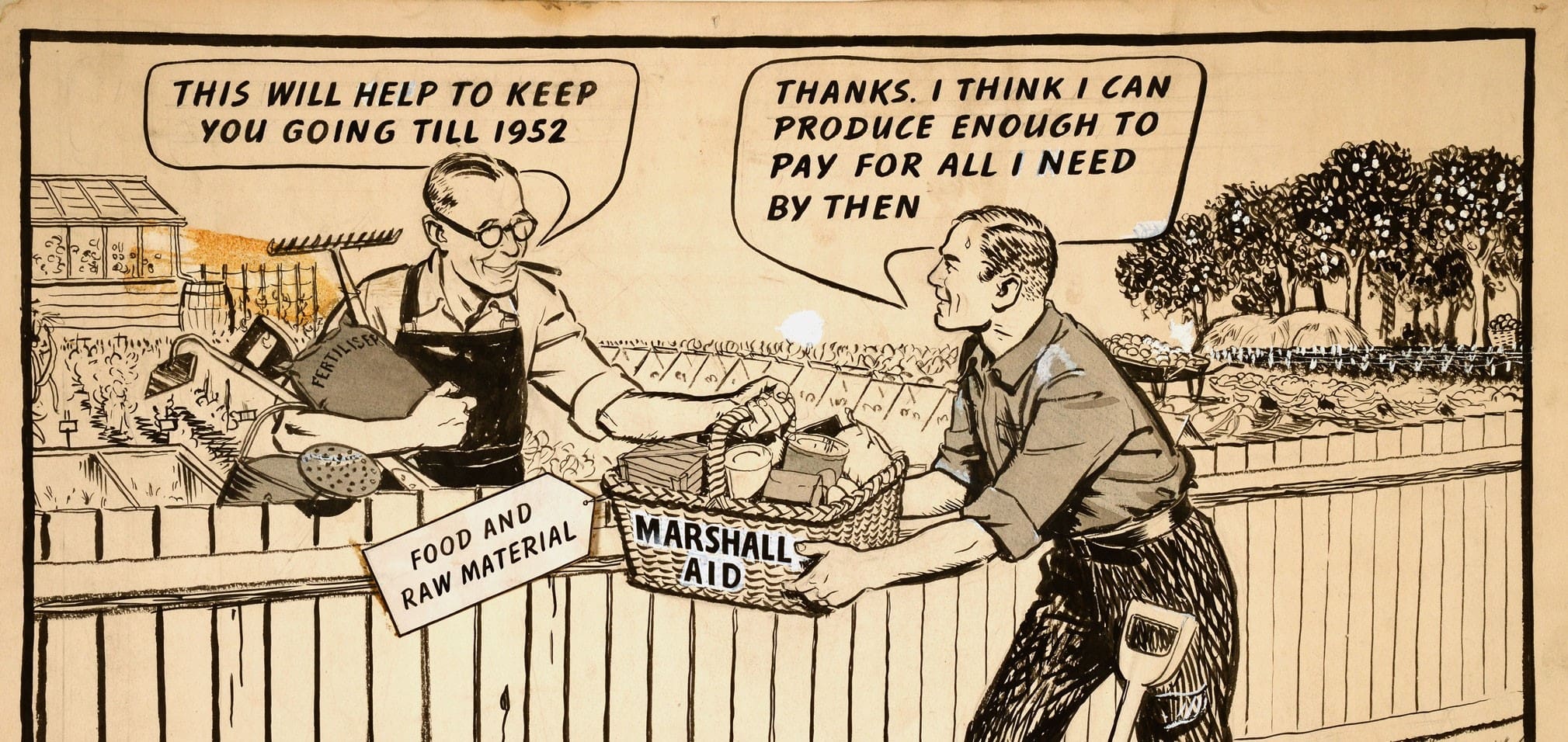
Introduction
The Marshall Plan, officially known as the European Recovery Program (ERP), was a landmark initiative launched by the United States in the aftermath of World War II. This comprehensive aid package, which provided $17 billion in financial support, was designed to assist in the economic revitalization of war-torn European nations. The Marshall Plan played a pivotal role in shaping the post-war world order and fostering stability, prosperity, and cooperation among Western European countries.
Background
The devastation caused by World War II left Europe in ruins, both physically and economically. Cities lay in ruins, infrastructure was crippled, and economies were on the brink of collapse. In this dire context, U.S. Secretary of State George C. Marshall delivered a speech at Harvard University on June 5, 1947, outlining a bold plan for American assistance.
Key Objectives
The primary objectives of the Marshall Plan were as follows:
-
Economic Recovery: The plan aimed to facilitate the economic recovery of European nations by providing financial aid for rebuilding infrastructure, factories, and transportation networks.
-
Stability: By helping European economies recover, the plan aimed to prevent the spread of communism, which was a significant concern during the early years of the Cold War. The idea was that prosperous nations would be less vulnerable to communist ideologies.
-
Cooperation: The plan sought to foster cooperation and integration among European nations, leading to greater economic and political unity. This would help prevent future conflicts on the continent.
Implementation
The Marshall Plan was implemented through a rigorous process:
-
Negotiations: European nations formed the Committee of European Economic Cooperation (CEEC) to coordinate the distribution of aid. The CEEC negotiated with the United States to determine the allocation of funds.
-
Aid Distribution: Over the course of four years (1948-1952), the U.S. provided financial assistance, technical expertise, and goods to European countries. The aid was used for various purposes, including food, fuel, machinery, and technical assistance.
-
Conditions: The Marshall Plan had certain conditions attached to it. Recipient countries were required to cooperate with one another, liberalize their economies, and implement market-oriented reforms. This helped create a foundation for economic stability and growth.
Achievements
The Marshall Plan was a resounding success:
-
Economic Revival: European economies experienced rapid recovery and growth. Industrial production, agricultural output, and trade all increased substantially.
-
Political Stability: The plan contributed to the political stability of Western Europe, helping to solidify democratic governments and deter the spread of communism.
-
Long-Term Impact: The cooperative spirit fostered by the Marshall Plan laid the groundwork for the European integration process, eventually leading to the establishment of the European Union.
Legacy
The Marshall Plan's legacy is enduring. It demonstrated the U.S.'s commitment to international cooperation and economic development. Its success highlighted the efficacy of economic assistance in post-conflict reconstruction and set a precedent for future international aid programs.
Conclusion
The Marshall Plan, with its $17 billion infusion of U.S. support, stands as a testament to the power of international cooperation and economic assistance in rebuilding war-ravaged nations. It not only revitalized European economies but also played a critical role in shaping the geopolitical landscape of the post-war era.



